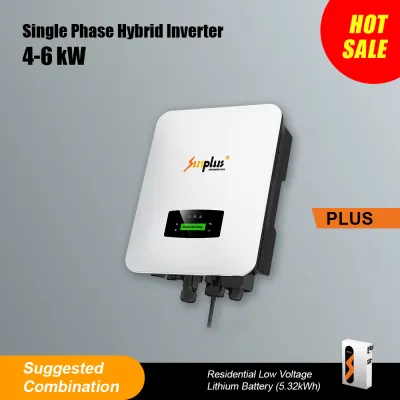Integrating Battery Storage with a Hybrid Inverter: Key Considerations
In the dynamic landscape of energy management, the integration of battery storage with a hybrid inverter has emerged as a revolutionary solution, redefining how we harness and consume power. This sophisticated technology offers unparalleled advantages, combining the best of both worlds - renewable energy sources and energy storage. In this comprehensive guide, we delve into the key considerations when integrating battery storage with a hybrid inverter.

Before delving into the intricacies of integrating battery storage, let's establish a foundational understanding of hybrid inverters. These advanced devices seamlessly switch between different power sources, efficiently managing both solar energy and grid power. The synergy between solar panels, batteries, and the grid ensures a continuous and reliable power supply.
Optimizing Solar Energy Harvesting
One pivotal aspect of integrating battery storage is optimizing the harvesting of solar energy. A high-quality hybrid inverter is equipped with advanced MPPT (Maximum Power Point Tracking) technology, ensuring maximum efficiency in converting sunlight into electricity. This optimization directly impacts the performance of the entire energy system.
Key Considerations for Battery Integration
Now, let's explore the crucial considerations when integrating battery storage into the hybrid inverter system. These factors play a decisive role in maximizing the benefits of this cutting-edge technology.
Battery Capacity and Type
The heart of any energy storage system is its battery. When integrating with a hybrid inverter, evaluating the battery's capacity and type is paramount. Lithium-ion batteries, known for their longevity and rapid charging capabilities, are often the preferred choice. Determining the appropriate capacity ensures a seamless balance between energy production and storage.
Synchronization and Control Systems
Achieving optimal performance requires a synchronized and well-coordinated control system. The hybrid inverter should seamlessly integrate with the battery management system (BMS), enabling real-time monitoring and control. This synchronization ensures efficient energy distribution, prioritizing stored energy when solar production is insufficient.
Grid Interaction and Backup Functionality
An intelligent hybrid inverter excels not only in harnessing renewable energy but also in providing a reliable backup during grid outages. This dual functionality ensures uninterrupted power supply, safeguarding against unforeseen disruptions. The seamless transition between grid and battery power is a hallmark of a well-integrated system.
Advantages of Battery-Integrated Hybrid Inverters
Understanding the advantages of integrating battery storage with a hybrid inverter is crucial for making informed decisions. Let's explore the myriad benefits that elevate this energy solution to new heights.
Energy Independence and Cost Savings
By storing excess energy during peak production periods, a battery-integrated hybrid solar inverter offers a degree of energy independence. This stored energy can be utilized during periods of low solar production or peak demand, reducing reliance on the grid and resulting in significant cost savings over time.
Environmental Sustainability
Reducing reliance on conventional energy sources contributes to environmental sustainability. A hybrid inverter, coupled with efficient battery storage, promotes a greener energy footprint by harnessing renewable sources and minimizing the carbon footprint associated with conventional power generation.
Conclusion
In conclusion, integrating battery storage with a hybrid inverter is a transformative step towards optimizing energy solutions. The considerations outlined above form the foundation for a robust and efficient system that not only harnesses renewable energy but also provides a reliable backup. Embracing this technology positions individuals and businesses at the forefront of sustainable and cost-effective energy management.

Comments
0